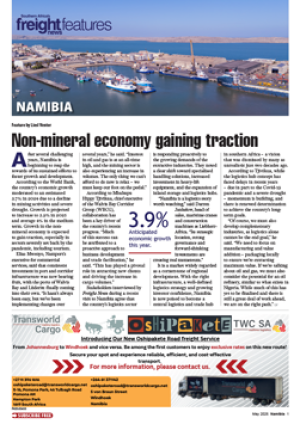RAY SMUTS
THE INTEGRAL reefer trade, which has opened several new markets overseas for South African exporters, is one of Maersk Sealand’s core focus areas right now, says SA MD Flemming Dalgaard.
“Unlike the specialised break-bulk (conventional) reefer sector where new ship building is virtually nil, there is an ongoing commitment to the reefer segment by the containerised shipping lines and investment in new container ships for deployment on the north-south trades is ongoing,” he said.
“An interesting emerging trend is the increased migration from traditional breakbulk to integral containers due in the main to the more favourable cost structure for customers.”
In South America, for example, volumes of fruit shipped in containers have grown from virtually nil to the preferred mode of transport over the past five years, he added.
“Although Maersk Sealand South Africa is targeting increased revenue this year, our main aim is to keep costs as low as possible and ensure our customers get the most competitive product.”
While the line is naturally keen to grow volumes, its main focus is optimal utilisation of current assets.
“The reason is that ship capacity around the world is very scarce so even if we wished to increase our capacity right now there simply would not be sufficent larger ships available.”
Regarding the state of affairs in the Port of Cape Town, Dalgaard says he has encountered a lot of co-operation and goodwill. “But putting measures into place does not occur as rapidly as one would wish for.”
An example is the non-availability of additional reefer plugs at the start of the deciduous season.
Optimal utilisation of existing capacity is key focus for Maersk Sealand
26 Mar 2004 - by Staff reporter
0 Comments
Cape Town 2004
26 Mar 2004
26 Mar 2004
26 Mar 2004
26 Mar 2004
